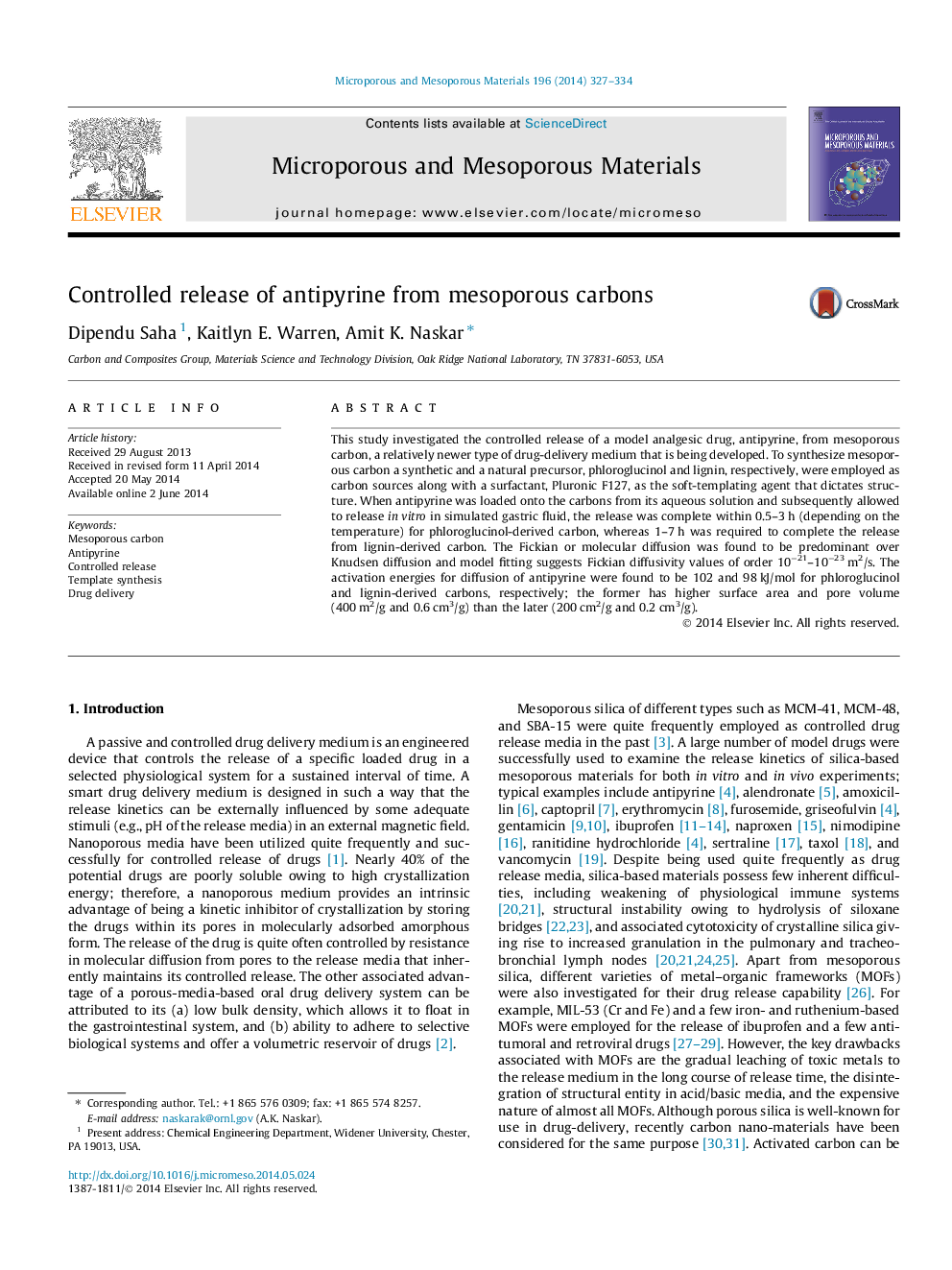| Article ID | Journal | Published Year | Pages | File Type |
|---|---|---|---|---|
| 73021 | Microporous and Mesoporous Materials | 2014 | 8 Pages |
•We have studied controlled release of antipyrine drug from mesoporous carbons.•The release time is short in the case of relatively ordered high porosity carbon.•The Fickian or molecular diffusion was found to be predominant over Knudsen diffusion.•The activation energies for diffusion of antipyrine in two different carbons were similar.•Release data from synthesized mesoporous carbons are similar to that from porous silica.
This study investigated the controlled release of a model analgesic drug, antipyrine, from mesoporous carbon, a relatively newer type of drug-delivery medium that is being developed. To synthesize mesoporous carbon a synthetic and a natural precursor, phloroglucinol and lignin, respectively, were employed as carbon sources along with a surfactant, Pluronic F127, as the soft-templating agent that dictates structure. When antipyrine was loaded onto the carbons from its aqueous solution and subsequently allowed to release in vitro in simulated gastric fluid, the release was complete within 0.5–3 h (depending on the temperature) for phloroglucinol-derived carbon, whereas 1–7 h was required to complete the release from lignin-derived carbon. The Fickian or molecular diffusion was found to be predominant over Knudsen diffusion and model fitting suggests Fickian diffusivity values of order 10−21–10−23 m2/s. The activation energies for diffusion of antipyrine were found to be 102 and 98 kJ/mol for phloroglucinol and lignin-derived carbons, respectively; the former has higher surface area and pore volume (400 m2/g and 0.6 cm3/g) than the later (200 cm2/g and 0.2 cm3/g).
Graphical abstractFigure optionsDownload full-size imageDownload as PowerPoint slide
